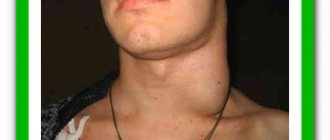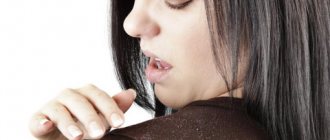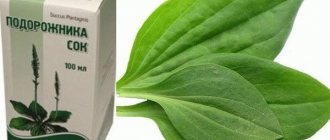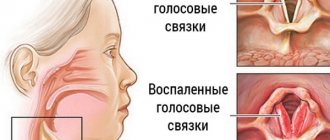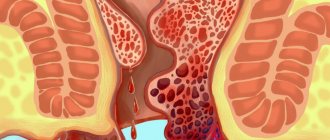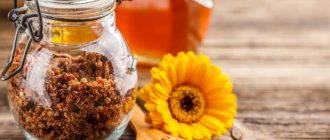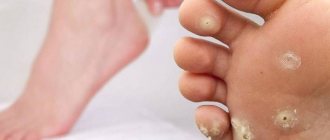Introduction
Different areas of the skin can be affected by specific fungal microorganisms that provoke skin fungus or mycosis.
If you suspect this unpleasant disease, you should consult a dermatologist . There are also a number of folk remedies against mycosis that can be easily and effectively used at home.
List of folk remedies for skin fungus
Already at the first signs of dermatomycosis, treatment should begin. A variety of folk remedies for skin fungus act on both the causes and symptoms of the disease. Self-prepared decoctions, tinctures and ointments heal superficial damage, but getting rid of the chronic form of mycosis will require the use of medications.
Antifungal folk remedies:
- herbs (calendula, onion, garlic, celandine, St. John's wort);
- sulfur, table salt, sodium bicarbonate (soda);
- essential oils: tea tree, eucalyptus;
- propolis ointment and tincture;
- Birch tar;
- decoction of oak bark;
- vinegar.
Important! Folk remedies with fungicidal properties cause the death of most fungal cells in the skin.
Sulfur, birch tar, alcohol tinctures of a number of herbs and some essential oils have a fungicidal effect. Other traditional medicines change the pH of the epidermis, creating uncomfortable conditions for the development of microbes.
Causes and symptoms of cutaneous mycosis
The penetration of infection into the body is facilitated by two types of factors: internal or external. Internal causes of the development of skin fungus are:
- weakened immunity after illness or vitamin deficiency;
- diabetes;
- long-term use of hormonal drugs;
- use of antibiotics without a doctor’s prescription;
- allergic reactions to the use of antibacterial cosmetics;
- HIV or AIDS.
External factors of infection include the penetration of microorganisms through cracks or injuries on the skin when visiting public places (saunas, baths, swimming pools and even guests).
There is a high probability of developing mycosis in those people who allow other people to use personal hygiene items (razor, shoes, towel, etc.).
Microorganisms often pass through areas of the skin through sweat during hot weather and exercise. The risk of infection is quite high with high humidity and the formation of diaper rash on skin folds.
When infected, the fungus begins to develop and manifest itself with the following symptoms:
- itching appears and, as a result, discomfort;
- the skin in which the infection is localized acquires a pinkish tint;
- cracks, peeling, diaper rash and rashes appear;
- the affected area emits a specific odor;
- against the background of decreased immunity, frequent colds and ailments occur.
Important!
If you notice the above symptoms, you should not delay treatment of the fungus, since in its advanced form the disease can spread to internal organs. It will be much more difficult to cure the advanced stage of mycosis.
Stages of development of fungus on the skin of the body
Stages of fungus on the skin
Almost all types of known fungal diseases develop according to the same plan. As soon as the infected spore gets on the healthy dermis, it immediately begins to act. The development of the disease can be divided into several “stages”:
- incubation period;
- development, growth and reproduction of harmful fungal spores;
- disappearance of infection.
As a rule, an infection in the human body does not develop instantly. It can go unnoticed for days, months or even years. At the same time, as soon as the human immune system gives the slightest failure, infectious particles immediately begin to develop. Due to the decrease in immunity, a very favorable environment for the proliferation of mycosis appears in the body.
The danger of an infected condition is that the fungus is highly contagious. It can easily get on the skin of healthy people, infecting them too. True, in many respects, the possibility of damage to a person’s skin depends on his immunity. If the immune system works stably, then he is absolutely not afraid of any mycosis.
The most effective herbal recipes
Mint
It is necessary to pick a small bush of the plant, wash it and dry it, and then finely chop it together with the leaves to a liquid pulp, adding a pinch of salt.
The composition must be applied to the affected areas of the skin for 60 minutes once a day until complete healing.
Lilac
Pick about 10 g of lilac flowers and pour 0.5 glass of alcohol into them. Place the container in a cool, dark place for 2 weeks. Apply the resulting tincture to the affected areas as often as you like until the condition of the skin noticeably improves.
cocklebur
You need to take a small amount of the leaves of this plant, grind it finely and squeeze out the juice. Treat the infected layer of the epidermis with this liquid daily.
Important!
Attention! It is advisable to make a new portion of cocklebur juice from fresh leaves every 3 days.
Kalanchoe
A small clean leaf of the plant is applied as a compress to the affected area of skin 3 times a day. As a rule, for a complete cure, this procedure is performed over 2-3 months.
Celandine
Squeeze 2 drops of celandine juice and mix it with the same amount of calendula tincture and oregano juice.
Add 4 tbsp to the container with the ingredients. clean boiled water. The resulting mixture should be rubbed into the affected skin areas several times a day.
Celandine can be prepared in another way: it can be infused in alcohol for 14 days in a 1:2 ratio. Use the tincture daily. It is enough to do the procedure once a day.
What to do to avoid getting infected with fungus.
- To disinfect the patient’s clothes and underwear, boiling is recommended - microorganisms die during boiling after 3-4 minutes.
- A 1% formaldehyde solution is used to treat shoes, and a chloramine solution is used to disinfect household items. This must be done, because after the disease is completely cured, you can become infected again through your own shoes and clothes. In this case, it is possible to treat foot and skin fungus for several decades without success.
- Here is another way to disinfect shoes at home, proposed on the pages of the newspaper “Vestnik ZOZH”. Treat the inside of the shoes with tampons soaked in 70% acetic acid, leave the tampons inside and place the shoes in a sealed bag for 48 hours. Then ventilate the shoes well.
- Fungus on the feet must be treated with special care until it is completely cured, since re-infection may occur from one unnoticeable source of infection. It does not go away on its own, but over time it can spread to the groin area, armpits, etc. In addition, it can cause increased allergies.
Other ways to treat mycosis at home
Salicylic acid
A 10% salicylic acid-based ointment is considered an effective treatment. The product is applied to a cotton pad and applied to infected areas of the skin 1-2 times a day. The effect is usually achieved within 5–6 days.
Reference! Acute forms of mycosis should be treated with salicylic ointment with a higher acid concentration. Use within one week. If there is no effect, the product is changed to another.
Tar soap
A wonderful remedy against skin fungus is tar soap, which can be purchased at any pharmacy. The following have a good antifungal effect:
- Tana soap , which contains birch tar and triclosan.
- Black soap from Grandma Agafya . It also contains birch chaga.
- Soap "Nevskaya cosmetics" with a complex composition.
This soap should be used every time you take a shower and bath, especially carefully lubricating the affected areas of the epidermis. After the body is wiped with a towel, the affected areas are additionally lubricated with iodine.
Strong black coffee
A strong coffee drink has a strong antihistamine and analgesic effect.
For a single procedure, it is enough to brew 5 tablespoons in one liter of boiling water. ground coffee.
The infused mixture can be used as compresses, rubdowns, or rubbing in grounds.
It is better to carry out manipulations in the evening, when the body is most relaxed. It is enough to devote 20–30 minutes to the procedure daily until visible symptoms disappear.
Onion and lemon
A freshly squeezed mixture of onion and lemon has a powerful effect on the fungus. The components must be in equal proportions to each other. Moisten a cotton pad with the juice and lubricate the irritated area several times a day.
Baking soda
A tablespoon of soda must be mixed with a small amount of warm boiled water. Shake the mixture until a homogeneous consistency is formed. Apply to the affected area and leave for 15–20 minutes. As a rule, daily procedures must be performed for one month to achieve maximum effect.
Garlic cream
Mix chopped garlic and butter in equal proportions until smooth. The composition must be applied to the infected areas every day for one month, maintaining a 20-minute interval.
Ointment of hops, burdock and calendula
You need to take 2 tbsp. collecting hop cones, burdock roots and 1 tbsp. calendula inflorescences.
All ingredients must be filled with water and brought to a boil. From the resulting broth, take a mixture of 1 tbsp. and combine it with 50 g of Vaseline.
The result should be a viscous mixture that is easy to apply to the body.
The layer of the applied product should be quite thin; this can be achieved by light rubbing. The procedure can be performed several times a day.
Chatterbox
Mix by shaking in a small sealed container (15 ml). salicylic alcohol, 15 ml. boric acid and ½ tsp. sulfur ointment. Use daily before bed. Stored in a cool, dark place.
Morning dew
In the summer, it is very useful to treat skin fungus (especially on the feet) to walk barefoot in the morning dew . This procedure serves as an excellent means of hardening, and therefore increasing immunity. The body becomes stronger and mycosis recedes. It is advisable to keep walking barefoot on the ground and grass for at least 20 minutes, or more.
Reference! This method of treatment can be combined well with other types of procedures. Walking barefoot also has a preventive effect on the entire body system.
How to cure fungus using baths?
The best remedy for this disease is baths, to which you need to add various active ingredients. Most often, the baths contain sea salt, vinegar essence and pharmaceutical herbs. Let's look at popular recipes!
Foot bath recipe with chamomile and cinnamon
For treatment you can use the following recipe:
- 30-40 g of chamomile or pine needles are steamed with 200 ml of hot water, the mixture is infused for 2-3 hours;
- the broth is drained, not forgetting to squeeze out the raw materials;
- add 1 tbsp to the resulting decoction. l. sea salt and 2-3 pinches of cinnamon, after which it is diluted with 2-3 liters of hot water.
Important! Baths to treat foot fungus are done daily, and after the procedure, medicinal ointment must be applied to the feet and nails.
Baking soda foot bath recipe
Soda has long been used to treat fungal diseases, and the most popular is the following recipe:
- 1 tbsp. l. soda and the same amount of salt;
- 2-3 tbsp. l. grated laundry or baby soap, which must be dissolved in water before use.
All ingredients are combined in a deep bowl, diluted with very warm water, after which you need to immerse your feet in the resulting liquid for 25-30 minutes, periodically adding hot water.
Vinegar nail bath recipe
Vinegar baths are used primarily against nail fungus; medicinal mixtures may include the following components:
- vegetable oil;
- carrot juice;
- iodine.
For the procedure, you need to take 50 ml of vinegar and the same amount of one of the above components, after which you can immerse the marigolds in the mixture for 5-10 minutes.
General contraindications
There is no doubt that natural preparations for the treatment of mycosis of the skin have a fairly strong healing effect. However, there are certain contraindications for their use:
- You cannot use one or another natural component if you are intolerant to it;
- in case of severe microcracks, due to the advanced stage of the disease, treatment medications with caustic components (for example, vinegar, onion, lemon, salicylic acid) should not be used;
- If you use this or that product and allergic reactions or other side effects occur to it, you must stop treatment and seek advice from a specialist.
If after 14 days of treatment with folk remedies the problem is not resolved, or the mycosis begins, on the contrary, to progress even more, then the chosen method of treatment should be suspended.
It is necessary to consult a dermatologist with the problem and follow his recommendations.
It is quite possible that the disease has already reached an advanced stage, and it is necessary to intervene in the recovery process and use already proven medications to improve the condition of the skin.
Symptoms of the disease
You can notice the disease by the first symptoms, which will help you start treating the fungus with folk remedies earlier. The color of the nail begins to change from pale pink to yellow, green, brown or even black. Other symptoms of fungal infection include the following:
- the appearance of unpleasant itching of the skin around the nail plate;
- pain at the site of the lesion;
- delamination and crumbling of the nail plate;
- the appearance of grooves, spots or inclusions on the plate;
- unpleasant putrid odor;
- the nail moves away from the nail bed;
- white plaque on the soft tissues under the nail plate.
Prevention
Preventive measures against skin fungal infection are divided into primary and secondary . Primary prevention involves following personal hygiene rules aimed at reducing the risk of fungal infection:
- do not use other people’s household items (comb, razor, towel) and do not wear other people’s things, especially this rule applies to shoes;
- rational treatment with antibiotics, not exceeding permissible standards when using them;
- after washing, things should be ironed well, especially socks;
- do not walk barefoot in public places.
Secondary prevention is aimed at avoiding recurrent mycosis :
- regularly carry out wet cleaning in the apartment;
- avoid sweating and diaper rash by regularly ventilating the room and taking a shower;
- disinfect shoes, towels, bathrobes, pajamas and other things from time to time;
- undergo diagnostics at least once every six months.
Treatment of skin fungus
Absolutely all fungal diseases are very difficult to treat. This is due to the fact that such diseases occur against the background of suppressed immunity. When treating fungus, both time-tested remedies and new antimicrobial drugs can be used. Modern remedies, in turn, are divided into those that completely kill the fungal infection and those that simply prevent the spread of the fungus. Depending on the diagnosed disease, therapeutic methods may differ significantly.
Comprehensive treatment of fungal infection should include the following:
- use of local and systemic antimycotic agents;
- therapeutic actions in relation to somatic pathology;
- treating all the patient’s belongings with antifungal agents to protect against possible re-infection;
- compliance with personal hygiene rules.
Local treatment of skin fungus
Due to the fact that mycoses are a very common disease, doctors know well what ways and means to cure a patient from this unpleasant illness. Today, a huge number of topical medications are offered that help quickly get rid of uncomfortable symptoms. Such products are available in the form of ointments, lotions, powders, sprays and drops. The patient himself can easily apply these drugs to the affected areas of his body.
Depending on the observed clinical picture of the disease, treatment of the infectious fungus is carried out by the following means:
- in case of damage to the skin, the appearance of swelling and secondary infection, it is necessary to use antimycotic medications containing antibiotics and cortocosteroids (Mycozolon, Triderm, Lotriderm);
- When the inflammatory processes subside, drugs should be used that directly kill the fungus and prevent further spread of the infection. Such agents are divided into two groups: azoles and allylamine group. Azoles include clotrimazole, miconazole, bifonazole, fluconazole, etc. The allylamine amine group includes drugs such as naftifine and lamisil.
Treatment of skin fungus with systemic antifungal drugs
Fungus on the skin in the photo
Mycosis can also be cured with systemic drugs. Such medications in the form of injections and tablets, in most cases, are prescribed at the moderate and severe stages of the disease. This is due to the fact that during such periods the fight against infection with local drugs becomes completely ineffective. The most important condition for such treatment is the constant presence of the patient under medical supervision.
System tools, according to their characteristic features, are also divided into two main groups:
- Azoles – Intraconazole, Ketocornazole, Fluconazole;
- Allylamine amines - Naftifine, Terbinafine, Intraconazole.
It is worth noting that fungal diseases are very dangerous, so you should not self-medicate. The prescription of medications, as well as their dosage, should be determined only by specialists.
Pathogenetic therapy
Medicines in this group are prescribed by doctors when various pathologies are detected. With the help of these drugs, it is possible to achieve the best effect from therapeutic treatment, while significantly reducing the likelihood of dangerous side effects.
Reasons for treatment failure
The main reason for the ineffectiveness of prescribed therapy is the violation of the regimen by the infected person himself. Many people do not take this type of disease seriously, trying to get rid of the disease using folk methods, relying on rumors and stories from friends and self-medicating, which, in the end, not only does not bring a positive result, but also aggravates the existing problem. It is worth noting that treating patients with therapeutic methods under the supervision of a specialist can also be ineffective, but only if the patient does not complete the prescribed treatment. Remember that to completely cure the fungus, you must strictly follow all medical recommendations.

